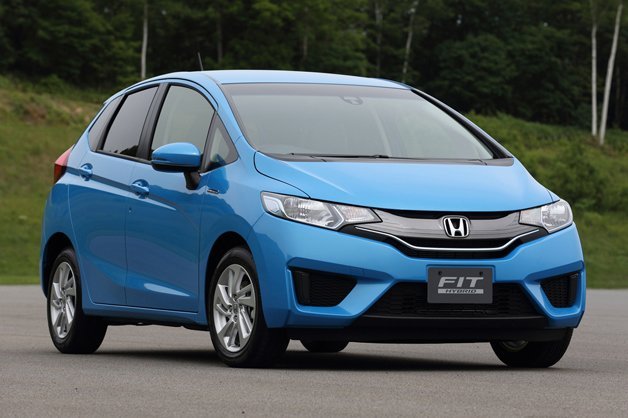The ones with the markedly more aggressive snout and Cuisinart-blade alloys? Yup, they were the real deal, but they weren't the standard model, they were images of the new Hybrid. We know this because Honda has just released a handful of images and some details on its forthcoming gas-electric hatchback, and the images line up perfectly.
The big story for the third-generation Fit Hybrid will be the fuel economy, naturally. Honda says it has achieved economy ratings of 36.4 kilometers per liter – 86 miles per gallon – on its home-market cycle, highest among all hybrid models in Japan and a 35-percent improvement over the current Fit Hybrid, a model not sold in the US.
Interestingly, the Fit brooms the company's underwhelming Integrated Motor Assist system in favor of a new single-motor e-assist system dubbed Sport Hybrid i-DCD, and it eschews a CVT like most hybrids in favor of a "dual clutch drive" (i-DCD) with seven speeds. The architecture can completely uncouple the 1.5-liter Atkinson cycle four-cylinder engine and the i-DCD's 22-kilowatt electric motor. The motor itself is backed by a lithium-ion battery that's integrated into the power unit, and Honda is also touting a new servo brake system and electric compressor that increases the efficacy of the regenerative braking while curbing engine load. The Fit Hybrid will be able to putter along at speeds of up to 31 mph in pure electric mode for 1.9 miles.
Automotive News reports that while the Fit Hybrid seen here isn't expected to be sold in the US, the technology will come to America in the form of a subcompact sedan and crossover based on the Fit's architecture, as early as next year. The conventionally powered five-door Fit will be built in North America for the first time, and should hit dealers in the third quarter of next year. Built in Honda's new Ceyala, Mexico plant, the US car is likely to be offered with a 1.5-liter direct-injection engine paired to a CVT, both new components in Honda's Earth Dreams arsenal. A 1.3-liter port-injected powerplant is also expected to be fitted elsewhere in the world.



Related News



